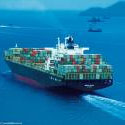| |
|
| |
|
 |
Supply
Chain by the Numbers |
| |
|
| |
- Feb. 8, 2019 -
|
| |
|
| |
|
| |
|
| |
Amazon Growing 3PL Business Too; US Trade Deficit Finally Shrinks; Purchasing Manufacturers Index Shows Economy Still Strong; Ocean Container Rates Headed Up in 2019 |
| |
|
| |
| |
| |
| |
50% |
|
That is the percent of Amazon Markeplace sellers, which use the Amazon platform to sell their goods without Amazon taking ownership of the merchandise as it does for its normal web business, that also use the Fulfilled by Amazon (FBA) service. That according to estimates in a new report from the analysts at Armstrong & Associates. Under FBA, Amazon acts as a 3PL for these sellers, providing storage, pick, pack and ship functions. As a result, Armstrong estimates Amazon is acting as 3PL for 12% of all business-to-consumer e-commerce shipments – a sizable share. Armstrong expects this trend to continue, as third-party sales on Amazon’s marketplace continue to accelerate (including partnerships with big brands like Nike), and as it works on improving its fulfillment processes and pass the efficiencies along to those sellers – including continuing to raise the bar for fulfillment speed. |
|
|
| |
| |
|
|

|
That was the surprisingly strong level of the January US Purchasing Managers Index from the Institute for Supply Management. That was well above the 50 mark that separates US manufacturing expansion from contraction, and up 2.6 percentage points from the December reading, belying concerns about a slowing US economy. In more good news, the New Orders Index registered 58.2, a very strong increase of 6.9 percentage points and a bullish sign for future manufacturing activity. Combined with more very good news on the jobs creation front, it looks like the economic good times are still here for at least awhile longer.
|
| |
| |
|
| |
| |
| |
6.5% |
 |
That is the forecast increase in both contact and spot ocean container shipping rates in 2019 coming from fresh estimates by the analysts at Drury Shipping. Transpacific contracts typically run from May 1 to April 30, and shippers and carriers commonly begin negotiations around this time of year. "We expect the modest recovery we saw in ocean freight rates we saw last year to continue into 2019 with the pace quickening," said Simon Heaney, the senior manager of container research at Drewry, during a webinar this week. Drewry says that in 2018, container rates were up just 2.5%. Contract rates are heavily influenced by prevailing spot rates, and while transpacific rates are off from their recent highs from in Q2/Q3 2018, Drewry’s Martin Dixon said they are still about $500 per 40-foot container (FEU) higher from Shanghai to the US West Coast than they were a year ago. Spot rates were recently close to $2000 per FEU. |
| |
| |
| |
|
|
|
| |
 |
 |
| |
|
|
| |